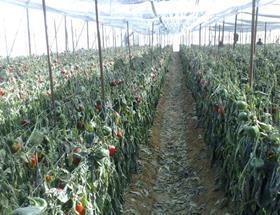
US importers and distributors expect to receive a steady but reduced volume of fresh produce from Mexico throughout the growing season despite the impact of low temperatures on 4 February in the country’s western regions.
Although some media reports have indicated widespread crop losses, early assessments do not represent the true impact to the vegetable deal, according to a press release from the Nogales, Arizona-based Fresh Produce Association of the Americas (FPAA).
“Contrary to some early prognostications, we expect to see steady supplies of key items like tomatoes, bell peppers and melons throughout the season,” said Lance Jungmeyer, president of FPAA.
Western Mexico has a variety of microclimates, meaning that while some fields were damaged extensively, growers from other areas will still be able to offer marketable supplies of key items, FPAA said.
“Retail and foodservice buyers should continue to regard Nogales as their first choice for winter vegetables,” Mr Jungmeyer explained.
“Volumes may be lower than normal, but buyers will find that the market remains well-supplied because of the increase in protected agriculture and the variety of microclimates in Mexico.”
Meanwhile, Mexico’s growers continue to assess the extent of damages to plants, foliage, fruit and bloom.
Generally, items grown under protected agriculture (greenhouse, shadehouse, hothouse) are showing signs of emerging in better shape than open-field varieties.
However, because of the microclimates, some open-field items will remain available. As such, FPAA advises buyers to coordinate with their individual suppliers.
Promotable volumes of table grapes from western Mexico are also expected given that most vines were in the early stages of their spring growth.
However, FPAA said it is too early to project harvest and start-dates for the grape deal although there will be ample fruit available overall and flavour tends to benefit from cool nights.
Mango volume, meanwhile, will not be adversely affected by the cold weather, according to FPAA, but it will take up to several weeks before a reasonable harvest projection takes shape.
With the assistance of associations CAADES, AALPUM and AMHPAC, Mexican growers are continuing to assess how much produce will be available.
Crops most affected include squash, cucumbers and green beans.
“We live up to a quality standard as an industry, and it is a standard that retailers and food service companies have grown to rely on,” Mr Jungmeyer added.
“Mexican growers and their distributors are working with a commitment to those high standards. High-tech packing equipment and expert quality-control staff are two of the factors that contribute to this process.”
Product availability is expected to continue at steady but lower levels than normal for the next six to eight weeks.






No comments yet